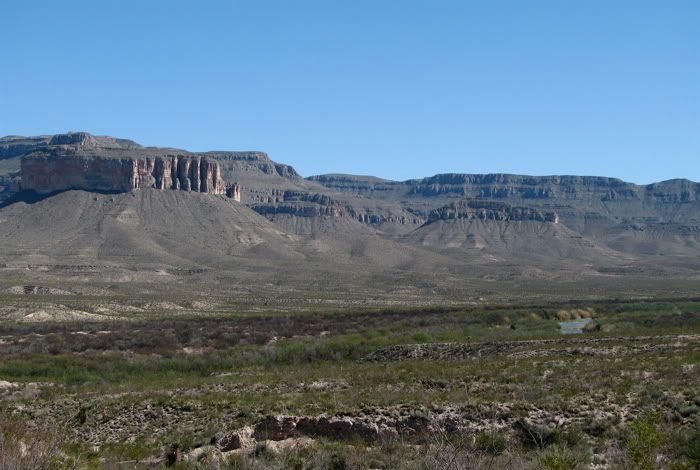Rides, ramblings and rants on a motorcycle.
4.04.2007,12:32 PM
Sense of place and time

I'm a creature of my surroundings. Ever since I can remember my environment has been a part of me, no matter where I am. And that has not always been a positive impact.
In the Maine woods I was nearly as much a natural inhabitant as the many life forms I shared it with. On the ranch in Oregon I shared pastures with the sheep for a spring noon-time nap while watching young red-tailed hawks squawk and flop from branch to branch, their mothers taunted them from nearby trees. And felt the caress of the Pacific coast fog on my body and spirit along with the peaks of the Coastal mountains as it slithered over the tops from their western slopes.
In California the ravaged land disturbed my spirit for months before I realized why: its silent wail of overuse and abuse never left me alone and haunted me. Areas of the the Northeast and Central US seemed complacently old and weary; the old but still vigorous and wild mountains and forests of Maine and New Hampshire were pleasurable. Ohio and West Virginia are suspended in time, an indecisive staggering of going forward or backwards.
Centuries of natural and human trials and conflict, against each other and amongst themselves, echoed in the canyons of the Dakota Badlands. There, my portal into the world of the West was my final step from my Eastern past. And without a look behind me, I stepped into the West. For I felt I was finally 'home'.
Barney Nelson writes about a 'sense of place'; accumulative and subconscious, possibly a 'sixth sense'. [1] Anyone living or has lived in a place where they sense the changing weather by a shifts in the wind or a scent on the air, intuitively find resources to survive off the land, look down at their feet and 'read' foot prints and animal scat, look up into the trees and predict drought or bountiful rain, find water in the desert by spotting cottonwoods, detect 'stale' or clean water by smell or a drop on the tip of the tongue, anticipate seasonal cycles by observing the changing fur color of rabbits and mink ......... you know that 'sense of place'.
As Nelson aptly comments, that sense comes with adaptation and surviving in a particular place. It may derive from observation of the surrounding life, flora and fauna, from trial and error. Consequences always follow decisions, and choices may be few. You learn quickly from negative consequences.
But it's more than just a sense of place, it's also a sense of time. Not only do we build upon past experiences, positive and negative reinforcement, but also knowledge of time that you 'read' in the land. Seashells on the tops of mountains indicate the land underneath your feet were once buried under massive seas and teeming with aquatic life. Fossils of plants and animals that once flourished on the same ground you walk possibly enjoyed conditions contrary to what you see and feel around you now. Mountain ridges were once buried deep below the earth surface only to be thrust upward and out by movements in the earth's crust as continents ripped apart. The magnificent red-hued arches and canyons were once solid rock, worn and sculpted over time by water. And you wonder where that water came from while standing in a blistering hot and dry desert.
Sometimes you wonder what the land looked like before concrete and asphalt ribbons cut it into strips and pieces, now jotted with concrete and wooden boxes we call 'home'. And wonder what it will all look like a decade, a century, or a thousand years from now.
Place and time go hand-in-hand like lovers in bed. They are coupled for eternity, or only a moment in their time, which equals thousands of years in our time.
To me the deserts and its canyons are the harbingers, the epiphany, the representatives of this sense. It's almost unfathomable, incomprehensible and sometimes overwhelming. The time over which these magical places formed extend the gamut of expansive seas vibrant with life, even in the smallest scale, then evolved either dramatically or slowly, sometimes both, to it's present state. They are the yin and yang of the environment.
Contrary to many people's perception of the desert as being empty, barren and lifeless, it teems with life. But it has different rules than what we are used to. The only real rule is adapt and survive. It's very simple, really. If you are attentive and observant, you will see how all the other creatures survive. And you learn from them. Survive, perish or go home.
Yes, the desert can be harsh and unforgiving. But it is also a place of beauty, peace and power.
Albeit words and photographs are always inadequate compared to the reality, I hope these posts impart a small measure of what the desert is.
[1] Nelson, Barney, ed. "A Big Bend Sense of Place" in God's Country or Devil's Playground (Austin, Texas: University of Texas Press, 2002).
Photo taken in Black Gap Wildlife Refuge, Texas.

